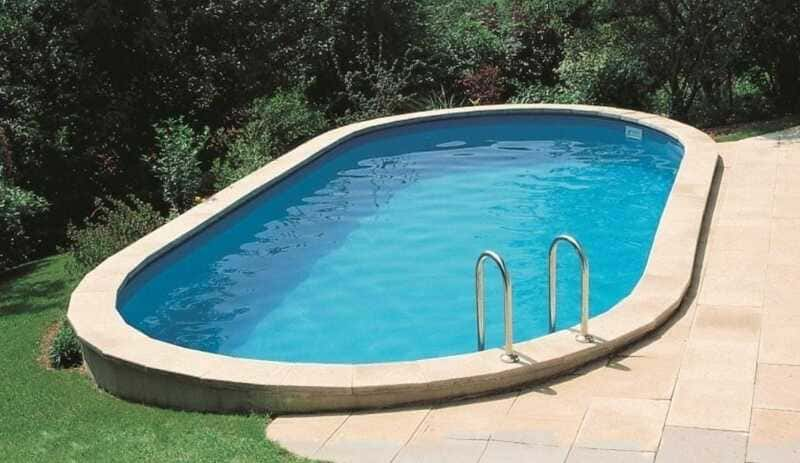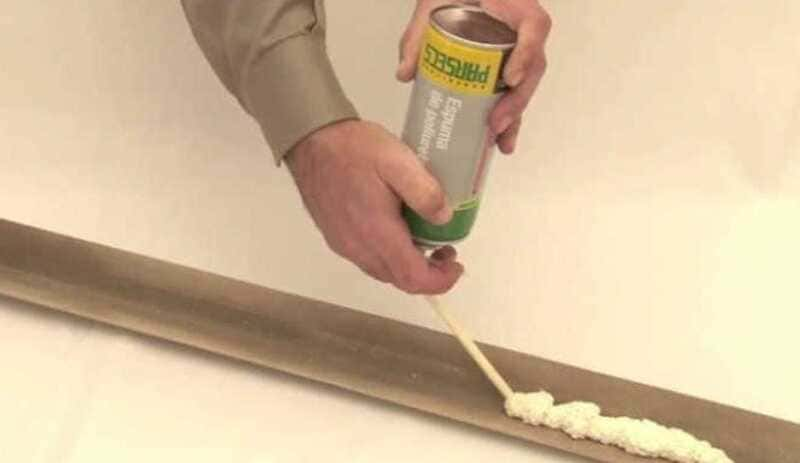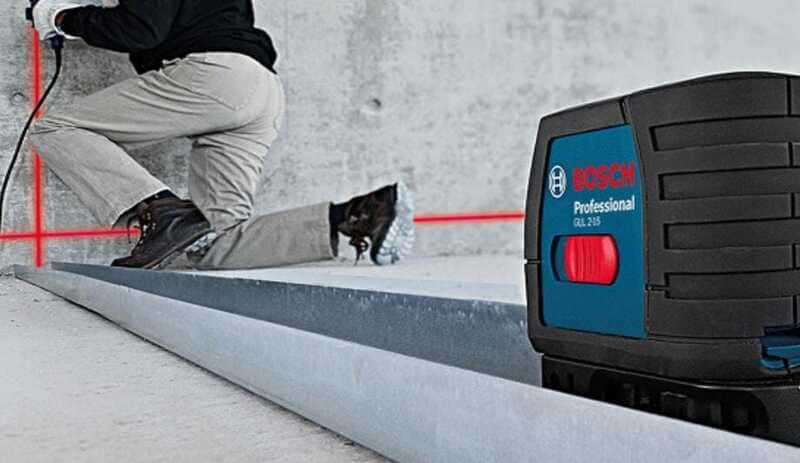In ground pools are a wonderful addition to any home, providing fun and relaxation during hot summer days. However, after years of use, they may begin to suffer from unevenness problems that affect both the aesthetics and safety of the pool.
The reasons for this can be varied, from settling of the ground to drainage problems. If your inground pool is uneven, don’t worry, there is a solution. In this article, we’ll show you how to fix an unlevel inground pool so you can enjoy your pool again without worry.

We’ll explore the most common causes of unevenness, the best techniques for correcting it, the equipment needed, and tips for preventive maintenance to avoid future problems. Read on for detailed information on how to solve this problem and get your pool safe and beautiful again.
Causes of unevenness in inground pools.
The first thing to consider when starting the process of how to fix an unlevel inground pool is the root cause of this problem. The unevenness of an inground pool can be caused by several reasons, and it is important to understand the causes in order to correct it properly. One of the most common causes is settlement of the soil due to changes in humidity or temperature. As the soil moves, the pool may begin to sink or tilt on one side, resulting in an uneven surface. Another common cause is lack of good drainage, which can lead to a buildup of water on one side of the pool and a rise on the other side.
Other causes include structural problems, such as a poorly constructed concrete slab or inadequate base, and soil erosion around the pool. In some cases, unevenness can be caused by changes in the water level in the pool, which can occur due to a failure of the filtration system or water return piping.
If your inground pool is unlevel, it is important to identify the cause of the problem before attempting to repair it. The solution may vary depending on the cause of the unevenness. For example, if the problem is caused by soil settlement, leveling the ground beneath the pool may be necessary to correct the problem. In other cases, it may be necessary to repair drainage or fix structural problems in the pool.
Inspection and evaluation of pool unevenness.
Once you realize that your inground pool is unlevel, the first task is to inspect and evaluate the problem. The assessment is essential to determine the severity of the problem and the best way to correct it.
The inspection is crucial in order to go through the process of how to fix an unlevel inground pool. The inspection should begin with a visual assessment of the pool surface to identify any sloping or sinking. You should also verify that the water level is uniform throughout the pool. If you notice any problems, you should measure the unevenness using tools such as a bubble level or laser measuring device.
It is important to determine the cause of the unevenness before attempting to repair it. If the problem is caused by soil settlement, it is important to identify whether the settlement is progressive or has stopped, as this will affect how you approach the repair. If the problem is caused by a structural problem, it is necessary to determine the nature of the problem before beginning any repair work.
Once the unevenness of the pool has been assessed, the best way to correct it can be determined. In some cases, leveling the floor under the pool may be necessary to correct the problem, while in other cases, polyurethane foam can be used to level the pool surface. It is important to follow safety instructions and use proper equipment to avoid injury during the repair process.
Methods for correcting pool unevenness.
When it comes to how to correct unevenness in an inground pool, there are several methods that can be used. The method you choose will depend on the cause of the problem and the severity of the unevenness.
One of the most common ways to correct inground pool unevenness is to level the ground beneath the pool. This method involves excavating the soil under the pool on the higher side and adding soil under the lower side. This can be a laborious and costly process, but can be effective in correcting problems caused by soil settlement.
Another method that can be used is to inject polyurethane foam under the pool. The foam expands to fill the voids below the pool surface and level the pool. This method is less invasive than floor leveling, and can be a quicker and more economical solution to correcting pool unevenness.
In more severe cases of unevenness, structural repairs to the pool may be necessary. This may include repairing cracks or replacing defective components. These types of repairs can be costlier and may require the assistance of a pool repair professional.
Use of polyurethane foam to level the pool.
Another effective method to correct the unevenness of an inground pool is the use of polyurethane foam. Polyurethane foam is used to fill the empty spaces below the surface of the pool and level it.
The process begins with drilling small holes in the surface of the pool. Through these holes, polyurethane foam is injected below the pool surface. The foam expands to fill the empty spaces and level the pool.

One of the advantages of using polyurethane foam to level the pool is that it is a less invasive process than floor leveling. In addition, polyurethane foam is water resistant and does not degrade over time, making it a long-lasting solution.
However, it is important to note that the use of polyurethane foam may not be the right solution for all cases of pool unevenness. If the problem is caused by soil erosion or the presence of cracks in the pool structure, another repair method may be necessary.
Use of laser leveling devices and measuring tools for the leveling process.
The use of laser leveling devices and measuring tools is a common practice in the process of leveling an inground pool. These devices and tools make it possible to accurately measure the height of the pool surface at different points and determine the level of unevenness.
Laser leveling devices work by emitting a horizontal laser beam that is projected onto the pool surface. The measuring tool is placed at different points around the pool and used to measure the height of the laser beam at each point. In this way, the level of unevenness of the pool can be determined.

Another commonly used tool is the bubble level. This instrument is placed at different points around the pool and is used to determine the levelness of the pool surface.
The use of these devices and tools allows for an accurate measurement of the level of unevenness of the pool. This is essential to determine the cause of the problem and to select the most appropriate repair method.
It is important to note that the use of laser leveling devices and measuring tools requires skill and experience on the part of the professional performing the repair. If you are unsure how to fix an uneven inground pool, it is advisable to seek the help of a pool repair professional.
Safety considerations for the pool leveling process.
The process of leveling an inground pool can involve certain risks, so it is important to keep in mind some safety considerations during the process.
First, it is important to make sure the pool is empty before beginning any leveling work. This minimizes the risk of injury or damage to the pool due to the weight of the water.
In addition, it is important to ensure that the area around the pool is clearly demarcated and that adequate safety measures have been taken. This includes the use of safety barriers and signage to prevent unauthorized access to the work area.
It is also important to have the proper personal protective equipment in place during the leveling process. This may include hard hats, safety glasses, gloves and safety footwear.
Finally, it is advisable to hire a pool repair professional to perform the leveling process. These professionals have the experience and proper equipment to perform the job safely and efficiently.
Preventive maintenance to avoid future problems of unevenness in the pool.
Preventive maintenance is one of the best ways to avoid future unevenness problems in an inground pool. It is important to perform proper maintenance on a regular basis to ensure that the pool is in good condition and to prevent problems from arising in the future.
One of the main causes of unevenness in pools is the soil under the pool settling or moving over time. To avoid this problem, it is important to ensure that the soil is properly compacted before installing the pool. In addition, it is important to avoid placing heavy objects or pooling water in one place in the pool.
Another way to prevent unevenness is to perform regular inspections on the pool structure. This includes checking the pool liner, joints, pipes and other components for any signs of wear or damage. Any problems detected should be repaired immediately to avoid major problems in the future.

It is also important to maintain water levels in the pool properly to avoid excessive pressure on the pool walls and floor. This can be accomplished by installing a proper drainage system and performing regular inspections to detect any problems in the drainage system.
Lining and finishing the pool after leveling.
Once the pool leveling process has been completed, it is important to pay attention to the lining and finishing of the pool. If polyurethane foam has been used to level the pool, it is important that any excess foam be removed before continuing with the coating and finishing process.
The next step is to apply the appropriate liner to the pool. The type of liner to use will depend on the personal preferences of the pool owner, as well as the budget and durability of the material. Some common choices include vinyl liner, cement, fiberglass and tile.
Once the liner has been applied, the finishing process can begin. The finish can be in a wide variety of styles, from ceramic tile to wood and stone. It is also possible to apply a water-resistant epoxy paint finish to give the pool a more modern and elegant look.
It is important to keep in mind that the process of lining and finishing the pool can be an extensive and costly job. Therefore, it is advisable to seek the help of an experienced professional to ensure that the process is carried out correctly and the desired result is achieved.
Estimated cost and time to level an inground pool.
The estimated cost and time to level an inground pool can vary significantly depending on the size and level of unevenness of the pool, as well as the methods used to level it.
In general, the cost to level an inground pool can range from a few thousand dollars to tens of thousands of dollars. If polyurethane foam is used to level the pool, the cost may be less than if other more labor-intensive methods, such as excavating and backfilling the soil, are used.
The estimated time to level an inground pool can also vary. If polyurethane foam is used, the leveling process may take only a few days. However, if a more labor-intensive method is used, such as excavating and backfilling the soil, the process can take several weeks.
It is important to keep in mind that the estimated cost and time to level an inground pool can increase if additional problems are encountered during the leveling process, such as structural or plumbing issues. It is important to work with an experienced contractor and obtain a detailed quote before beginning the leveling process.

